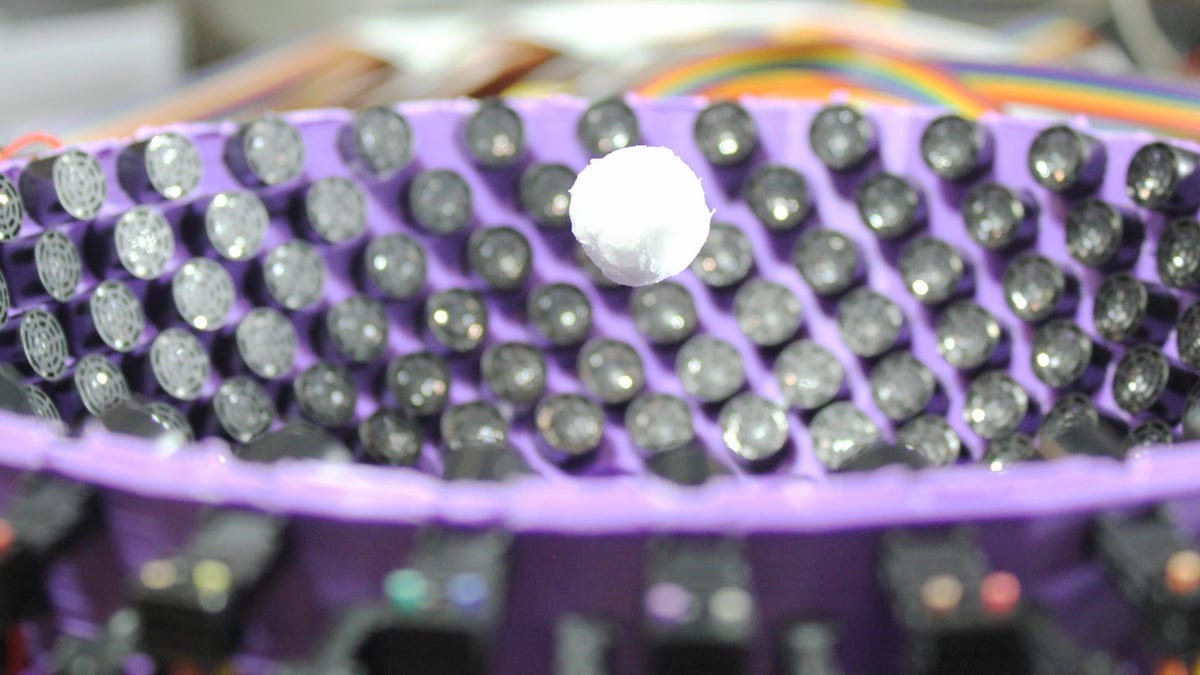Tractor beam breakthrough could lead to levitating humans
Yes, really. Sci-fi technology that can float objects in mid-air like magic could become reality.

A styrofoam particle of 1.6cm (1.88 wavelengths of sound) trapped in the center of a "tornado" of ultrasonic waves.
Tractor beams have made the jump from science fiction to reality in recent years, but only for levitating very small objects. A new breakthrough could lead to futuristic, far out new uses for the technology and open the door to levitating much larger objects, including humans.
Engineers from the University of Bristol have been able to trap (essentially levitate) objects using an acoustic tractor beam that is larger than the wavelengths of sound used by the device.
"Acoustic researchers had been frustrated by the size limit for years, so it's satisfying to find a way to overcome it. I think it opens the door to many new applications," Asier Marzo from Bristol's Department of Mechanical Engineering, said in a release. Marzo is lead author on a paper published Monday in the journal Physical Review Letters.
Those applications could include touchless control of drug capsules or micro-surgical implements inside the human body using sonic tractor beams. It could also become possible to move and manipulate fragile items in a whole new way.
"I'm particularly excited by the idea of contactless production lines where delicate objects are assembled without touching them," said Bristol's Bruce Drinkwater, who oversaw the work.
The breakthrough comes from using rapidly fluctuating acoustic vortices, which the team describes as similar to "tornadoes of sound, made of a twister-like structure with loud sound surrounding a silent core."
By changing the twisting direction of the vortices, the researchers were able to stabilize the tractor beam and increase the size of the silent core, allowing it to hold larger objects. Using this technique and 40kHz ultrasonic waves (simillar to a pitch that only bats can hear), they were able to levitate a two-centimeter polystyrene sphere, the largest object ever trapped in a real world tractor beam.
Perhaps most impressive is that the research suggests this technique could be scalable all the way up to people proportions.
"In the future, with more acoustic power it will be possible to hold even larger objects," said senior research associate Mihai Caleap. "This was only thought to be possible using lower pitches making the experiment audible and dangerous for humans."
Soon, "floating on air" could go from just a saying to the way we take a nap when there's no bed available.
Crowd Control: A crowdsourced science fiction novel written by CNET readers.
Solving for XX: The tech industry seeks to overcome outdated ideas about "women in tech."

